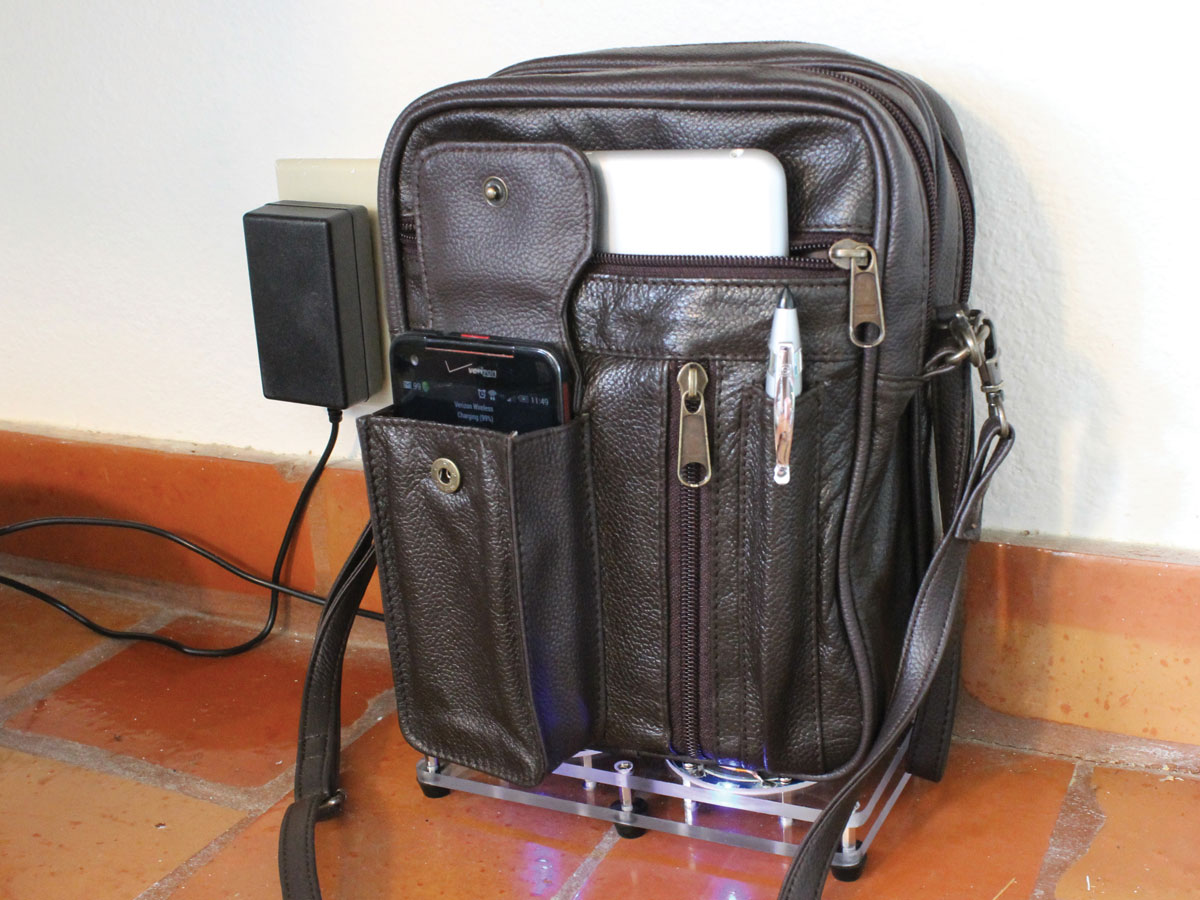
Last November, Adafruit Industries’ wearables guru Becky Stern published a “Cell Phone Charging Purse” project that used an inductive power transfer link to wirelessly power a hacked handbag from a base station with a built-in transmitting coil. A receiver was sewn into the bag’s bottom lining and wired to a phone charging cable inside. Keep your phone plugged into the bag, and the bag on the station, and you could just grab the bag any time and go, confident that you were leaving with a fully charged device.
I liked that idea, but wanted to take it a step further — to eliminate plugs from the system altogether. Here’s how I did it.
How it Works
Wireless battery charging operates on the principle of electromagnetic induction (see “Skill Builder: Induction Instruction”). Inductive charging has been a household technology for decades (for instance in electric toothbrushes), but recently has begun appearing in smartphones and other mobile devices.
Though wireless charging is inefficient compared to a wire, it’s faster to connect and disconnect, and it spares wear and tear on plugs and jacks. For reasonable efficiency, the transmitting and receiving coils need to be aligned as closely as possible, but it’s straightforward to add magnets or other mechanical guides to make this easy. The plastic “well” your electric toothbrush sits in on its charging base serves exactly this function.
Thanks to intense competition in the mobile device market, 5V wireless power transmitters and receivers are readily and cheaply available, and my first experiment (Figure A) was simply to “daisy-chain” two of each together to see if an off-the-shelf wireless receiver could power a second wireless power transmitter. Answer? Yes, but not very well: The second transmitter doesn’t really get enough current to operate at spec, and will connect with the second receiver only temperamentally, if at all.
Since these gizmos are manufactured to an industry standard intended to allow diverse bits of hardware to play well together, I reasoned, they should be fairly well behaved (electrically speaking). Could I simply connect 2 transmitters and receivers in parallel (Figure B), like batteries, to increase the current output to a third? Short answer: Yes! It works.
Instead of a single wireless power link, this bag uses two: one to power the bag from the base station, and a second to charge the phone inside the bag. Build this wireless inductive charging bag and your phone may never need a cord again.




